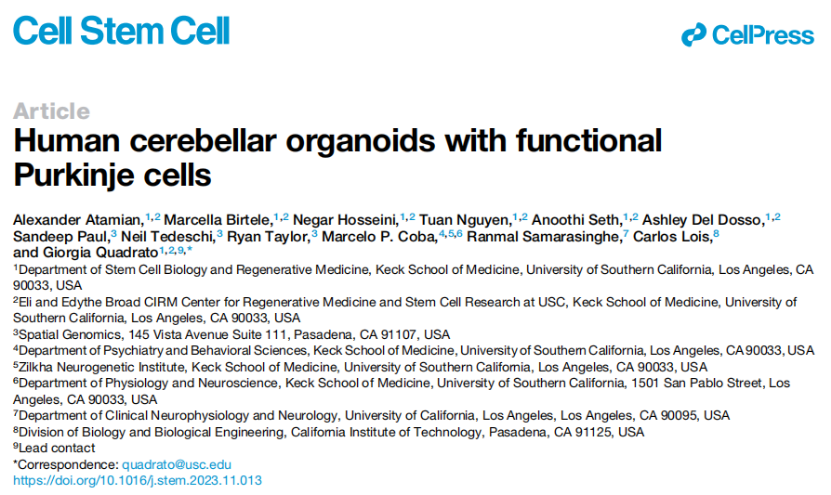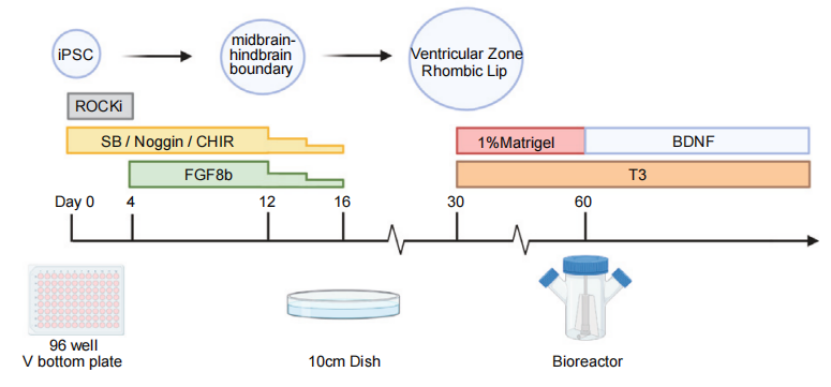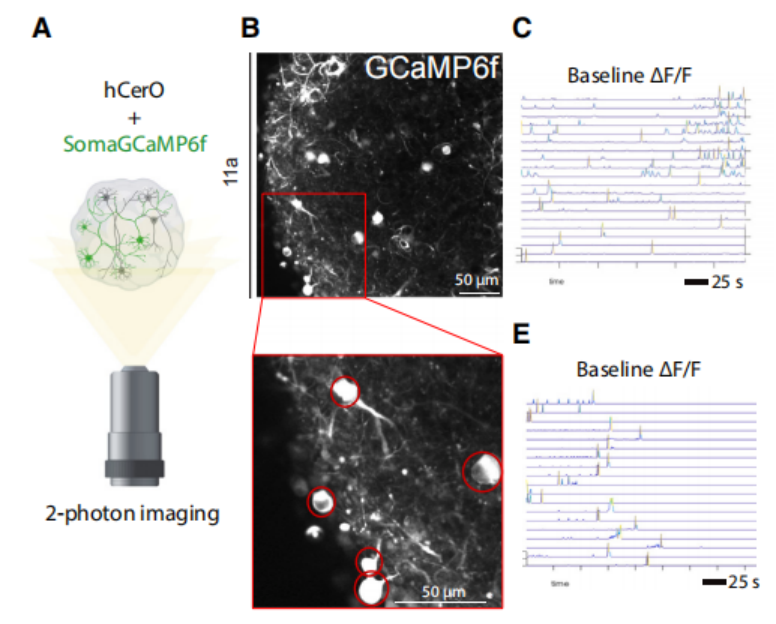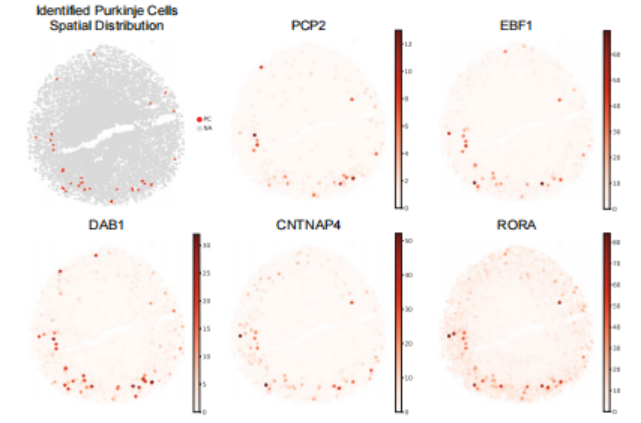
Source: BioValley
The cerebellum (CB) is crucial to the regulation of motor behavior, and is closely related to human cognitive functions such as language, spatial processing, working memory, executive function and emotional processing, so it has received extensive attention in the field of brain science.
In all mammals, the cerebellum originates from rhombomere 1 (r1), which in turn contains the ventricular zone (VZ) and rhomboid lip (RL). GABAergic neurons (a class of neurons that release gamma-aminobutyric acid) are generated in the ventricle, such as Purkinje cells; Rhombocheilus is responsible for the production of Glutamatergic neurons (a class of neurons that release glutamate), such as granule cells.
Although the early stages of cerebellar development are conserved across species, the human cerebellum has two major features, altered proportions of neuronal subtypes and increased lobular complexity, compared to other mammals, and some human-specific neural progenitor cells are present in rhombocheilus. Dysplasia of rhombocheilus is associated with a variety of cerebellar diseases, such as Dandy-Walker deformity, vermis dysplasia, and medulloblastoma. Other cerebellar disorders, like autism and Ataxia, are associated with degeneration of Purkinje cells.
These diseases have mainly been studied in mouse models, but mouse models do not fully reflect the diversity and functional characteristics of human small brain cells, nor do they fully reproduce the various phenotypes of human diseases. For example, the absence of Purkinje cells has been observed in patients with ataxic telangiectasia, a phenotype that is not reflected in mouse models. Therefore, there is an urgent need for brain scientists to develop an in vitro culture system of human derived small brain cells that can produce functional Purkinje cells.
Giorgia Quadrato's team at the Keck School of Medicine at the University of California, USA, has developed a human cerebellar organoid (hCerO) that allows functional small brain cells, including Purkinje cells, to survive and mature healthily for a long time in vitro in a human three-dimensional environment. The results, titled "Human cerebellar organoids with functional Purkinje cells," were published in the journal Cell Stem Cell on January 4, 2024.

The research team generated hCero organoids based on induced pluripotent stem cells (IPscs). The culture protocol presented here enables the formation in organoids of the major cell types during human cerebellar development, including specific progenitor cell subsets in the foetal rhombic lip and Purkinje cells. The culture protocol has good reproducibility and can be used to study specific molecular mechanisms related to cerebellar development and cell types in the disease. In addition, hCerO organoids show an organized layered structure, much like the granule layer (EGL) and Purkinje cell layer (PCL) at the developmental stage of the cerebellum.

hCerO culture diagram
hCero organoids cultured for only 2 months can form neural functional networks. Long-term culture can increase the level of functional connectivity between excitatory and inhibitory neurons in hCerO. These research data have laid a good foundation for using hCerO to simulate functional impairment related to cerebellar microcirculation developmental dysfunction.


Calcium signal imaging at hCerO
Using spatial transcriptomics, based on classical markers such as PCP2, DAB1, RORA, and FOXP2, the researchers found Purkinje cells in the periphery of hCerO organoids cultured for 6 months. In addition, using calcium imaging, patch clamp and calc-binding protein staining, it was found that the Purkinje cells in hCerO organoids had distinct dendritic endings and different cell morphology. This is the first time that functional Purkinje cells have been successfully cultured in a fully human cell culture system in vitro.


Spatial transcriptomic study of hCerO
Prospect and deficiency
This paper addresses a major technical challenge in the field of brain science, and the hCerO cerebellar organoids are promising for the study of cell-cell interactions in human cerebellum development, homeostasis, and disease processes. This study provides an effective research tool to further understand the evolutionary biology of cerebellum, study diseases related to rhombocheilus development, reproduce the connections between cerebellum and other brain regions, and accelerate the development of encephalopathy-related drugs.
However, this paper has the following three shortcomings:
(1)The number of cell lines used for in-depth analysis was small
In constructing the hCerO organoids, multiple cell lines of human pluripotent stem cells (hPSC) were used, but only one of these cell lines was selected when analyzing the cell diversity and regional characteristics of the organoids. The team was unable to determine whether different cell lines produced different organoid cell compositions, or whether different cell lines led to different conclusions. Therefore, it is necessary to include more human pluripotent stem cell lines for analysis in the future, so as to provide the effectiveness of culture protocols.
(2)Organoid culture time is not enough
The functional analysis of Purkinje cells was performed only in hCerO cultured for 6 months, and it is necessary to study the functional and morphological development of Purkinje cells over a longer developmental period.
(3)Lack of cell migration experiments
In the future, additional in vivo imaging experiments are needed to observe cell migration behavior in hCerO. This allows for a better study of tangential movement of granular cells at the edges of organoids or the transient formation of laminar layering.
References:https://www.cell.com/cell-stem-cell/fulltext/S1934-5909(23)00430-7